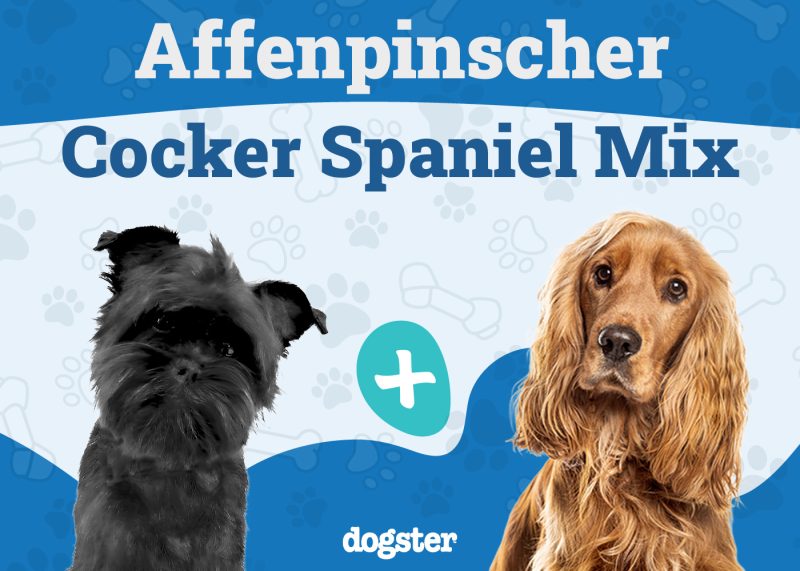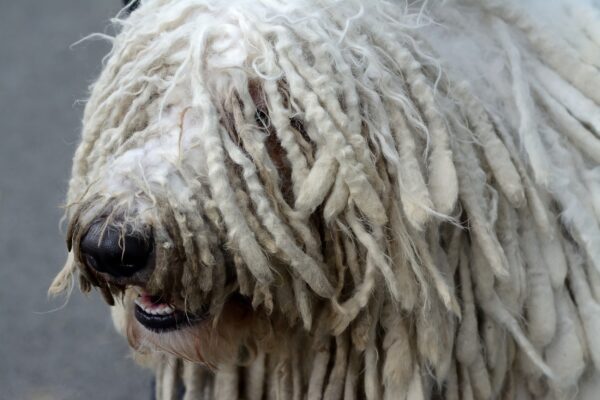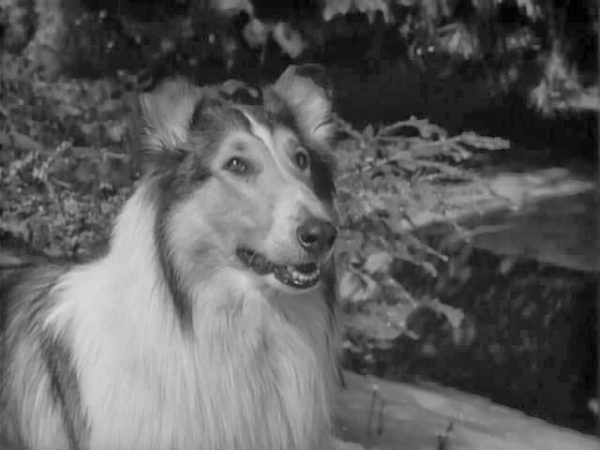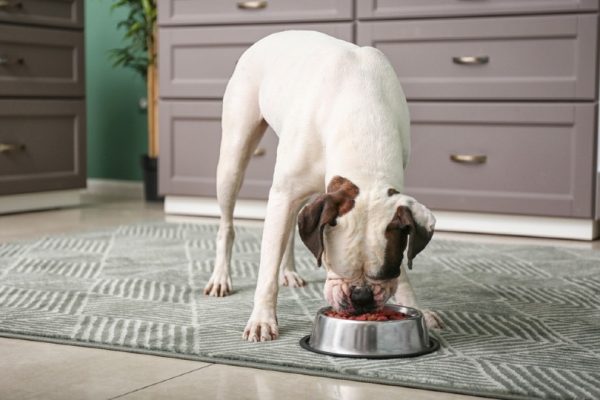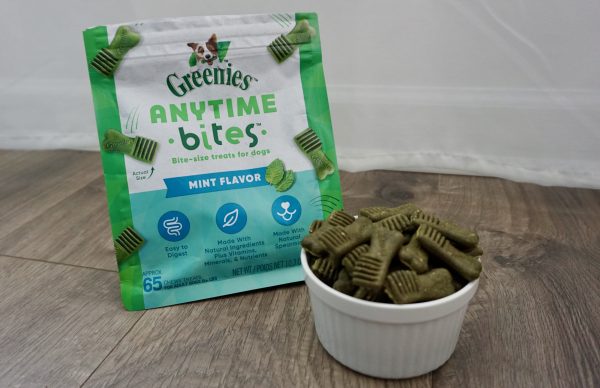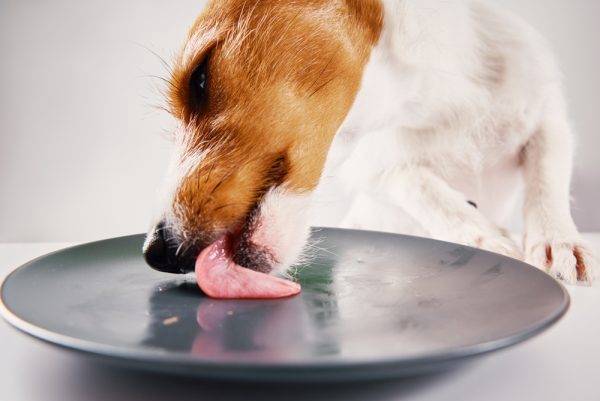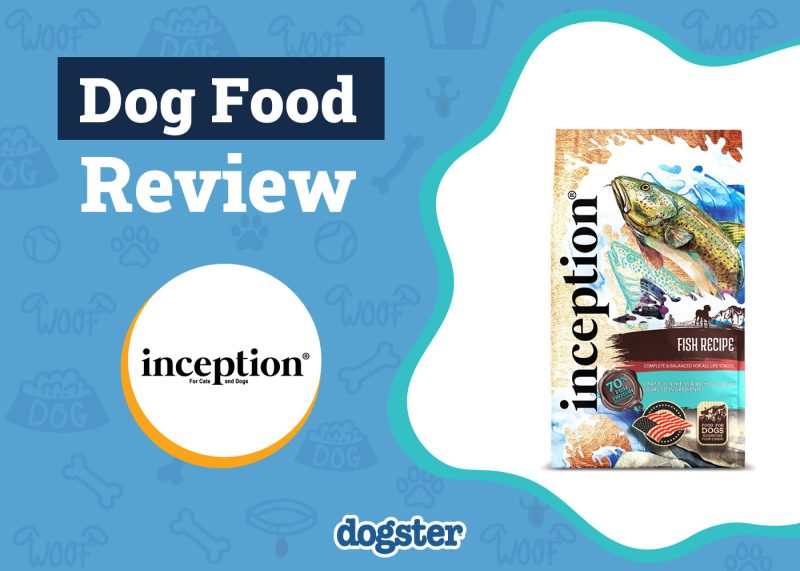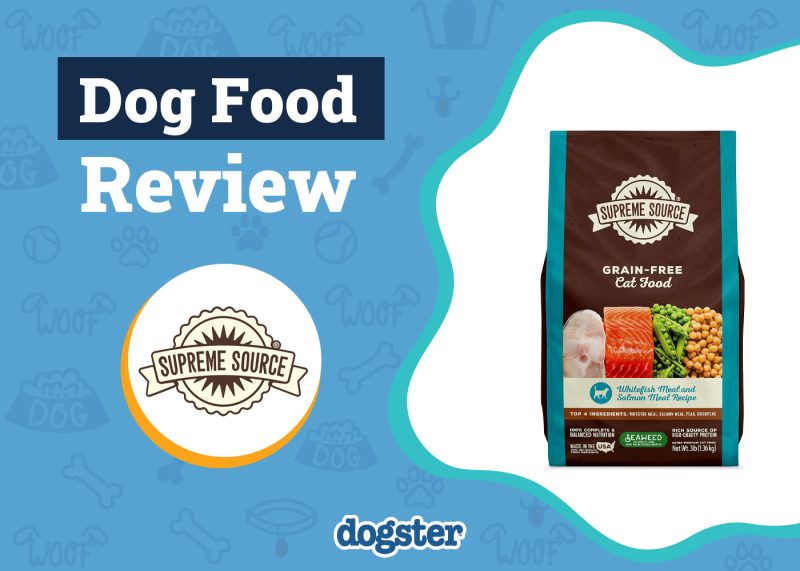In the veterinary world, we have seen an uptick in what are referred to as brachycephalic breeds. These are more lovingly known as the “squish-faced” breeds. Pugs, Frenchies, Bulldogs, Boston Terriers, etc. all fall into this category. Unfortunately, these breeds also come with a number of health problems.
In this article, we will focus on the six most common health problems in Pugs. Keep reading to find out what we see most often in veterinary medicine, what the risks may be to your Pug, and what we’d recommend for care.
If you need veterinary advice for your pet, we recommend PangoVet’s TeleVet service. You can have a video consultation with a real veterinarian from the comfort of wherever you are, no travel needed. PangoVet’s vets can provide you with personalized care and advice, and hopefully help ease your mind.
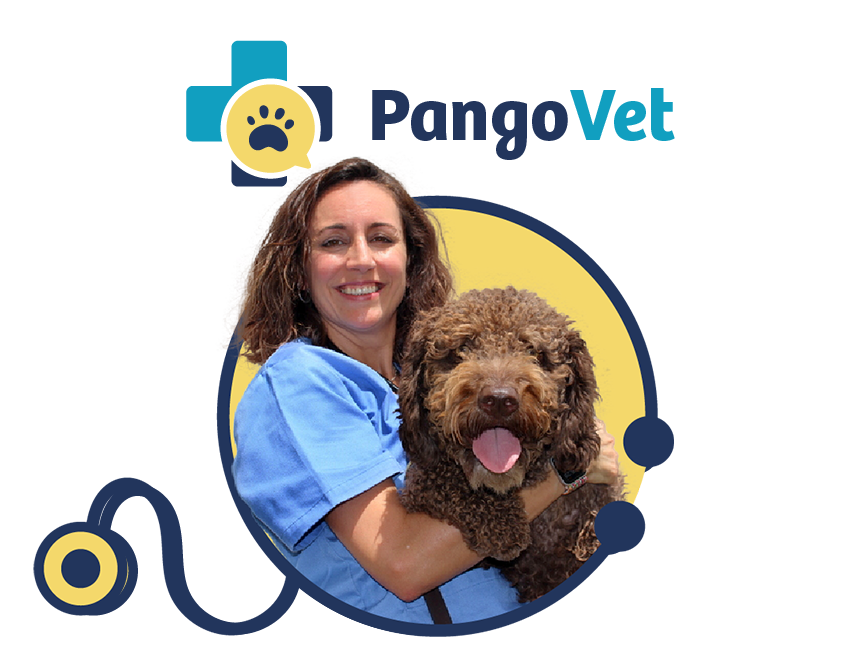
If you want to speak with a vet online, head to PangoVet and get the personalized advice you need for your pet — all at an affordable price!
Please note that PangoVet does not offer prescriptions and is not for medical emergencies.

The 6 Common Health Problems in Pugs
1. Brachycephalic Syndrome
Brachycephalic syndrome refers to the issues with the face and upper airway that we see from dogs and cats with “squished” faces.1 These dogs are all born with the same anatomical structures as the long-nosed breeds but condensed into a smaller space. With Pugs, we can frequently see them born with small nostrils (stenotic nares), an elongated soft palate, and everted saccules. Even just one of these abnormalities will cause an increased difficulty in your Pug moving oxygen into it’s body normally. However, if your Pug has all of these problems, their difficulty breathing goes up significantly.
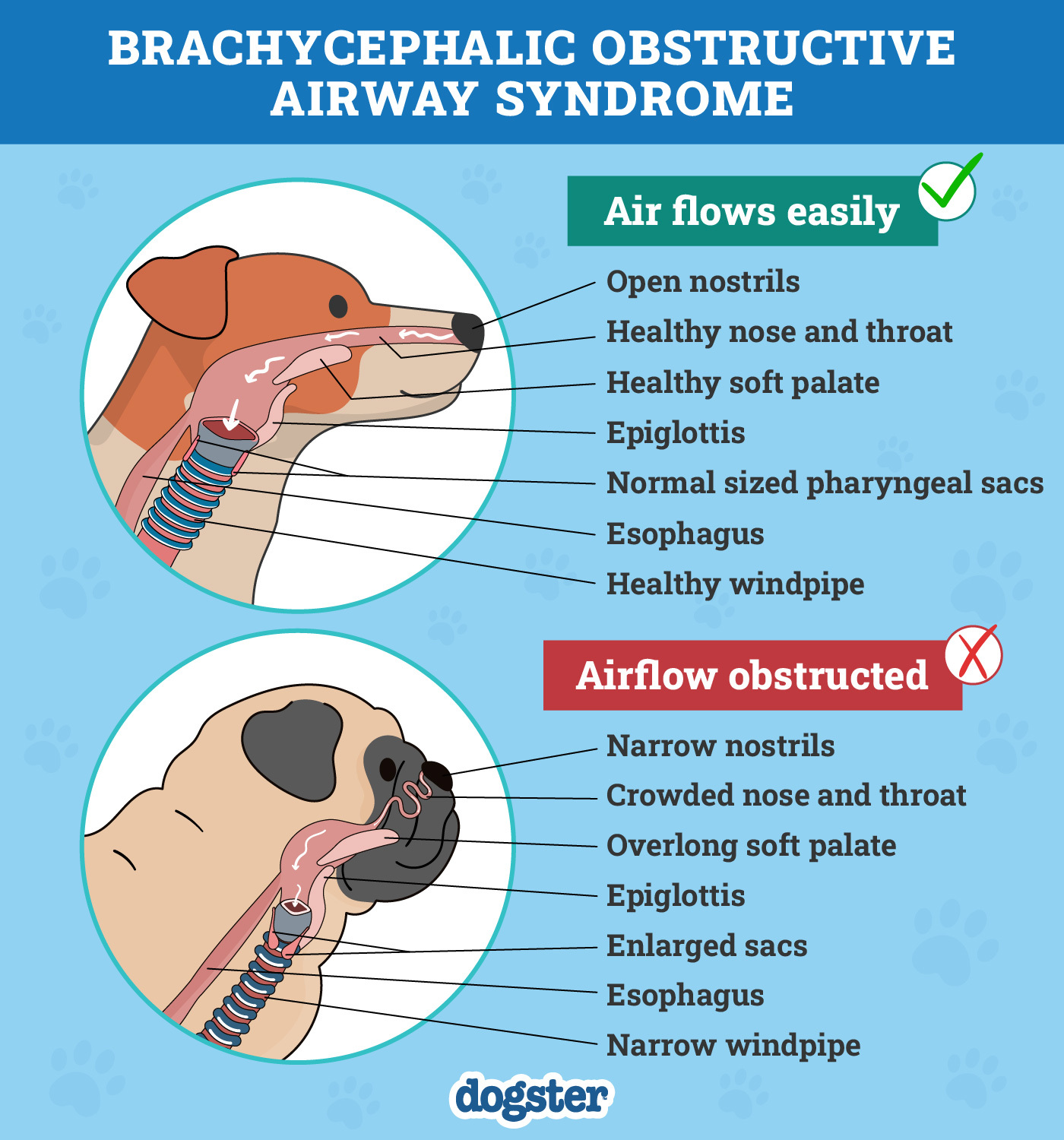
Risks to your Pug: Dogs and cats with brachycephalic syndrome, whether they have all three components or just one, are at increased risk for difficulty breathing and overheating. These Pugs have trouble moving adequate oxygen into the airways. Add the increased exertion of exercise, stress, and/or heat, and your Pug will naturally start to pant and breathe faster.
However, if they already can’t get enough oxygen into their body, the exertion will only worsen the stress on their body. It’s not abnormal to see brachycephalic breeds come into a veterinary clinic with heat stroke after a short walk, or even during temperatures that don’t seem that hot (think 60-degree weather). This risk goes up greatly as it gets hotter and more humid.
Recommendations for care: First, speak with your regular veterinarian about surgical options. Your veterinarian may be able to do surgery to enlarge the opening of the nostrils and trim a portion of the elongated soft palate. However, your Pug may not be a candidate.
As with any brachycephalic breeds, keep the exercise and exertion to short periods of time. Keep them cool at all times, but especially in hot and humid weather. Also, keeping your Pug at an ideal weight and not allowing them to become obese will help. The more weight they put on, the more their wrinkles and fat will further obstruct their throat and already compromised airways.
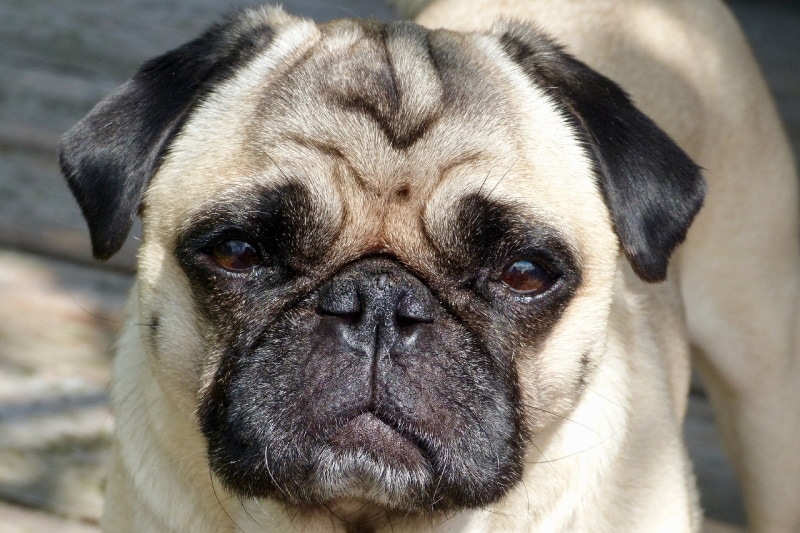
2. Allergies & Skin Infections
Allergies can be a fairly common disease in Pugs. Depending on where in the country you live, your Pug may suffer from allergies year-round, or just during certain seasons. Despite what is often seen in media and from food companies, allergies are more often caused by environmental factors rather than food. People with environmental allergies will commonly suffer from runny eyes, nose, and upper airway congestion. While we can see this in dogs, allergies more commonly manifest as itchy skin.
If you notice your Pug constantly rubbing their face or licking their paws and/or lower legs, then they may be suffering from allergies. In addition, while owners may think it’s impossible, flea allergies are extremely common. Even if you don’t see any fleas on your Pug, if they are itchy, assume that fleas may be part of the problem.
Risks to your Pug: Uncontrolled allergies can be excruciating for your Pug. They will constantly be itchy and want to chew, lick, and rub their bodies to get rid of the feeling. Once they start to do that, they may then get skin infections, which are just as itchy if not worse than the underlying allergies. Picture yourself covered in mosquito bites and constantly wanting to scratch these areas to try and get relief. That is what it feels like for your Pug to have allergies.
Recommendations for care: Speak to your veterinarian about good options for your Pug. What they recommend will depend on how itchy your Pug is, whether they are itchy year-round or just during certain seasons, and if they also have a skin infection. We now have great oral medication and injectable medication options for your Pug.
Oftentimes, people want to try an OTC antihistamine for their pet first. While this may sound like a good idea, it’s often ineffective for our dogs. Getting your Pug on a veterinary-prescribed flea preventative is also recommended. Please do not give any OTC medications or “at-home” remedies for fleas and allergies. There are many oils, foods, and human products that may be toxic to your dog.
3. Eye Issues
Due to Pugs having bulging eyes, we can frequently see them have ocular problems. Because the cornea has more exposure to the air and elements, we can see their eyes be affected from decreased tear production and/or inadequate tear production, corneal ulcers, and injuries. Dogs with protruding eyes are also at increased risk for globe proptosis.
Risks to your Pug: Chronic eye problems can be very painful to your Pug. They may constantly be squinting and/or rubbing at their face due to the discomfort. Over time, if your Pug has had long-term issues with their tears and/or cornea, they may develop scar tissue over the cornea and/or have trouble with vision. As mentioned above, Pugs are at increased risk for proptosis—or when the eye itself pops out of the socket. This can occur from any trauma to the head, but most commonly from getting bit over the eye or on the head by a larger dog.
Recommendations for care: Speak to your veterinarian about ways to help keep your Pug’s corneas protected and healthy. They may recommend an OTC or even a prescription medication for tears if your Pug has low tear production. Monitor any mild changes to your Pug’s eyes, such as cloudiness, redness, squinting, or crusting, and have your Pug seen if you see any of these issues. If your Pug unfortunately suffers a proptosis, you need to get them to the nearest emergency vet ASAP. Surgery is needed to either replace the eye or remove it completely, depending on the damage that has been done.

4. Obesity
Obesity in all breed dogs is extremely common. All of us dog parents love to love our pets with human food. They look up to us with those innocent faces and we just can’t say no! Because we are surrounded by obese dogs and cats, knowing what a healthy weight your dog should be at can be difficult, and many pet parents don’t even know their pet is obese.
Risks to your Pug: Being obese can come with a number of complications including added stress to the joints and organ systems. With Pugs, one of the biggest concerns is that added body weight in addition to the face and neck wrinkles may further obstruct their breathing.
Recommendations for care: Work with your regular veterinarian on keeping your Pug at a healthy weight. They will be able to best instruct you as to an ideal body weight and body condition for your specific fur baby.
Limit or completely eliminate human food handouts and treats. Even a small amount of snacks, such as cheese and sausage, can add significant calories and weight onto your Pug. Not to mention that once your Pug realizes you will give them the highly caloric foods, they will become pickier and picker with their dog food. You may start to think your Pug is sick or there is something wrong with their food, when in reality it’s because they’d rather have your pizza and steak. Keeping your Pug on a measured daily amount of a good quality dog food is your best bet.
5. Orthopedic Diseases
Pugs can be prone to a number of orthopedic diseases, such as a luxating patella (moving kneecap), hip dysplasia, and spine conformation abnormalities. Most of the orthopedic diseases are congenital or inherited, but sometimes trauma can be the cause. If you are planning on getting a Pug puppy from a breeder, knowing if the mom and dad have any of these conditions is recommended and helpful.
Risks to your Pug: Trouble walking, arthritis, and the complete inability to walk are all risks of orthopedic disease. Sometimes, the issues are minor but your Pug will develop arthritis as they age. Other times, your Pug may have progressive difficulty getting up and around and even walking as they get older and/or more affected.
Recommendations for care: Absolutely speak to your veterinarian about testing and monitoring. Your veterinarian will best be able to recommend testing and treatment options depending on what your Pug has, their level of pain, and their ability to get around normally. Radiographs are very typical to start with and surgery may or may not be an option as well. At minimum, your Pug should be kept comfortable on analgesia and/or a veterinary-prescribed NSAID.
Even if you think your Pug is not painful, any sort of limping or trouble getting around denotes pain. Absolutely do not give any OTC medications, such as Tylenol, Aspirin, Ibuprofen, etc. These can be toxic and fatal to your Pug. Not to mention, giving these may also limit what your veterinarian can prescribe.
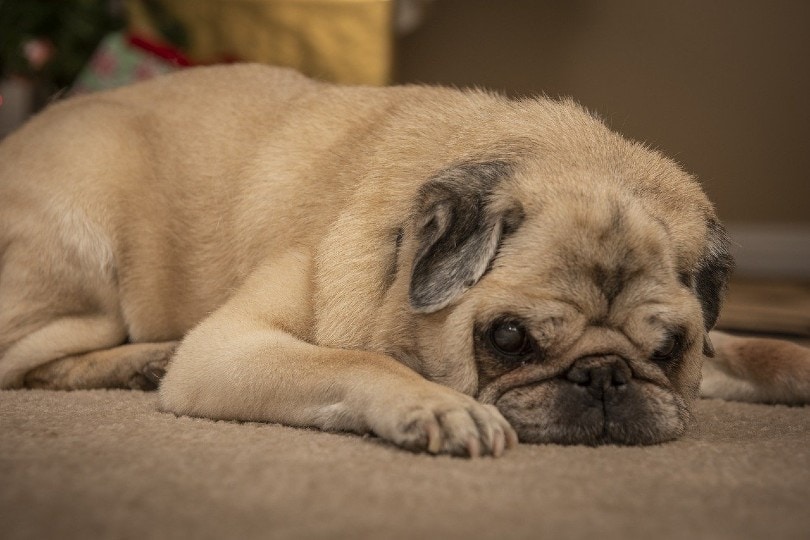
6. Neurologic Diseases
Pugs may have increased incidence of seizures, encephalitis, and intervertebral disc disease. These are all classified as neurologic diseases. Each disease will have different abnormalities and will present differently. In general, any type of tremor, seizure, ataxia (wobbly walking), change in behavior should be discussed with your veterinarian.
Risks to your Pug: Risks vary greatly, depending on the disease. Some Pugs can live a long, otherwise normal Pug life, even if they have a history of seizures and/or IVDD. Other diseases, such as encephalitis, may significantly shorten your Pug’s lifespan. Once a diagnosis is made, your veterinarian can speak to you about the biggest risks, concerns, and options for your Pug.
Recommendations for care: Going to your regular veterinarian as soon as any abnormal signs are noticed at home is the first step. Unfortunately, many neurologic diseases require advanced testing, such as an MRI, specialized blood tests, and a CSF tap. These may need to be completed by a board-certified neurologist and can be very expensive. Starting with a good exam and basic bloodwork by your veterinarian is recommended to start this process. What your Pug has will greatly change the care recommendations.

Summary
Pugs are cute, squishy, cuddly lap dogs who bring a lot of joy to people. In general, they tend to be fairly laidback, non-aggressive dogs. However, they come with a number of health problems that have only worsened over the years. From brachycephalic syndrome to allergies to neurologic disorders, Pugs are at an increased risk for a number of health concerns. If you plan on getting a Pug, make sure you do your due diligence and prepare for a lifetime commitment that may or may not be riddled with medical costs.
- See Also: How Much Do Pugs Fart? Facts & FAQ
Featured Image Credit: Michael Siebert, Pixabay






